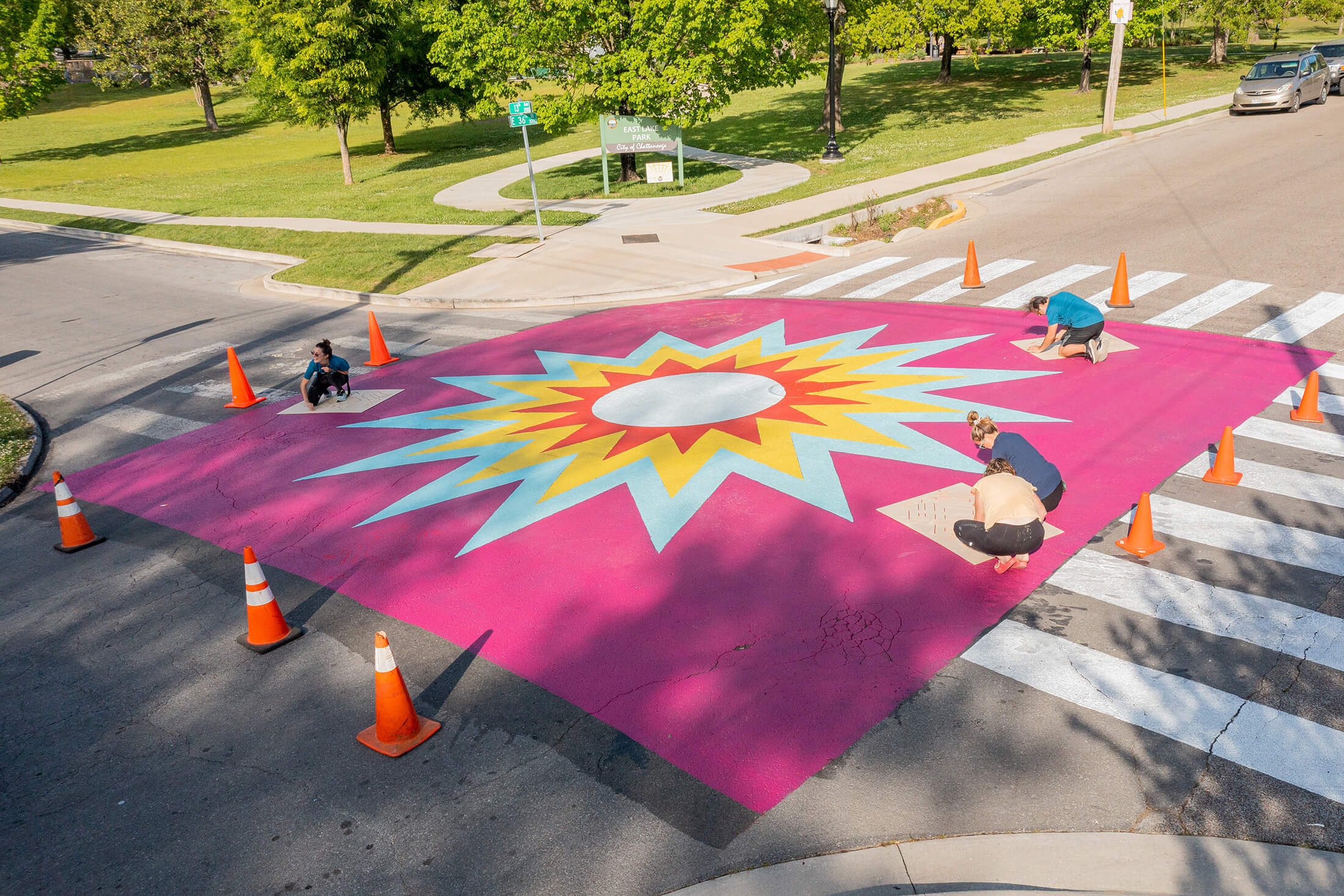Daniela Paz Peterson’s path from her native Chile to her current home in Chattanooga, Tennessee, was long and winding. A serendipitous encounter with an American led to marriage and a move to the southeastern United States; her studies in the field of social work led, somewhat circuitously, to a career in conservation.
The one constant has been Peterson’s natural inclination to connect with other people, and she has brought that passion—and skill set—to her work with Trust for Public Land, where she is the community strategies senior advisor.
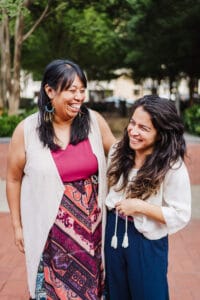
Park Listener Faviana Gaspar (left) and TPL Community Strategies Senior Advisor Daniela Paz Petersen enjoy a moment outdoors in Chattanooga. Photo: Brooke Bragger
Peterson’s background in social work and fluency in Spanish have also helped with her efforts at “creative placemaking”—a fancy term for making sure the parks and public spaces we create reflect the arts and culture of the communities where we work. In her first role at TPL, in fact, Peterson was a Creative Placemaking Fellow.
She contrasts this approach with more top-down park strategies, often in prominent downtown areas. “Sometimes, it’s problematic when we think about flashy projects where the transformation is incredible, but it’s not anchored in community,” Peterson explains.
In Tennessee, Peterson wants to enlist communities in the brainstorming and design of new parks and trails, as well as new additions to existing parks such as benches and art installations. She has a rule about food offered at such events, too: it must come from within a mile of the gathering. This serves the dual purposes of directly investing in local businesses while providing foods that residents are familiar with.
“Parks and placemaking should help support the process of people feeling welcome, feeling a sense of identity.”
– Daniela Paz Peterson, TPL community strategies senior advisor
She likens the process of creative placemaking to the experience of taking public transportation in Chile. “In South American countries, when you are going to take the bus, you go to this corner, and the corner has a bench and a structure, and normally there is a mural created by a neighbor or the community and someone selling a sandwich and coffee,” she says. “You will likely know the driver. You will just be surrounded by things that feel familiar and comfortable.”
“Parks and placemaking should help support the process of people feeling welcome, feeling a sense of identity,” says Peterson. As part of TPL’s community strategies work in Chattanooga, she oversees a Park Listeners program that embraces placemaking as one of its methods. Through the initiative, residents learn how to use their expertise to better understand the community; this can take forms as sophisticated as quantitative data collection or as simple—but impactful—as listening.
These Park Listeners, which will soon number 18, are paid to fan out into the community and ask neighbors what they want to see in their parks. The idea is to go where other residents naturally spend time, whether at the hair salon or local park, rather than expect them to come to us. And the goal is to speak their language, reflect their communities, and understand their cultural norms.
Donate today to support our work creating green spaces that reflect local communities.
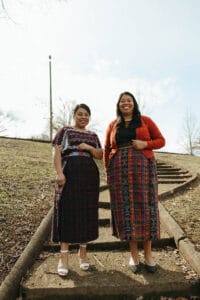
Claribel Hernandez (left) and Faviana Gaspar are TPL Park Listeners who engage with residents to learn what they want to see in their parks. Photo: Keren Treviño
Two such listeners are sisters Faviana Gaspar, 34, and Claribel Hernandez, 29, both of Chattanooga and originally from Guatemala. They interviewed dozens of residents both in English and Spanish, as well as their Indigenous Guatemalan dialect, Q’anjob’al. They learned that creative placemaking is about more than art; it includes atmosphere and even utilities.
“A lot of Latino people we spoke with would like to have parks that look more like their countries, with light at night, because everyone gets off work at seven or eight o’clock,” Faviana says. “For many people, it’s the only time they have to enjoy a park.”
Chattanooga is certainly not the only place where TPL is pursuing the art of creative placemaking. In many cities and towns where we are active, Trust for Public Land staff seek to ascertain the needs and cultural touchstones of the community. One place that crystalizes those efforts is Westwood, a neighborhood in southwestern Denver.
There, Trust for Public Land joined a coalition to advance an ambitious project, called Westwood Via Verde, which is adding parks, bike lanes, tree canopy, wayfinding signs, and art to the community.
One of these art projects involved street murals, including a work depicting a pair of giant koi fish—one red, the other blue—emblazoned on the intersection outside Castro Elementary School.
Ratha Sok, a local artist and first-generation Cambodian American, says the idea for the mural, which he painted in 2020 with help from neighbors and students, emerged from his own cultural background. “It represents good luck and fortune,” he says, referring to koi fish, “and that is something that appeals to the Asian-American and Pacific Islander community in Westwood.”
In Chattanooga, Peterson says an art installation made in 2021 involved months of discussion with local residents. The impetus to paint murals directly on the streets was to slow traffic at the corners of East Lake Park, one of the oldest in the city. Working with a nonprofit group, ELLA (East Lake Language & Arts) Library, TPL rented a Popsicle cart, handing out survey sheets about the project along with free paletas.
“People wanted to see natural life in the murals—animals and plants—so we worked with a firm in Miami well known for asphalt art installations,” Peterson says. Frogs were high on the list, since they are a common motif in Guatemalan textiles. So were stars: starbursts are often featured at the bottom of baskets, one of the main handicrafts in Guatemala.
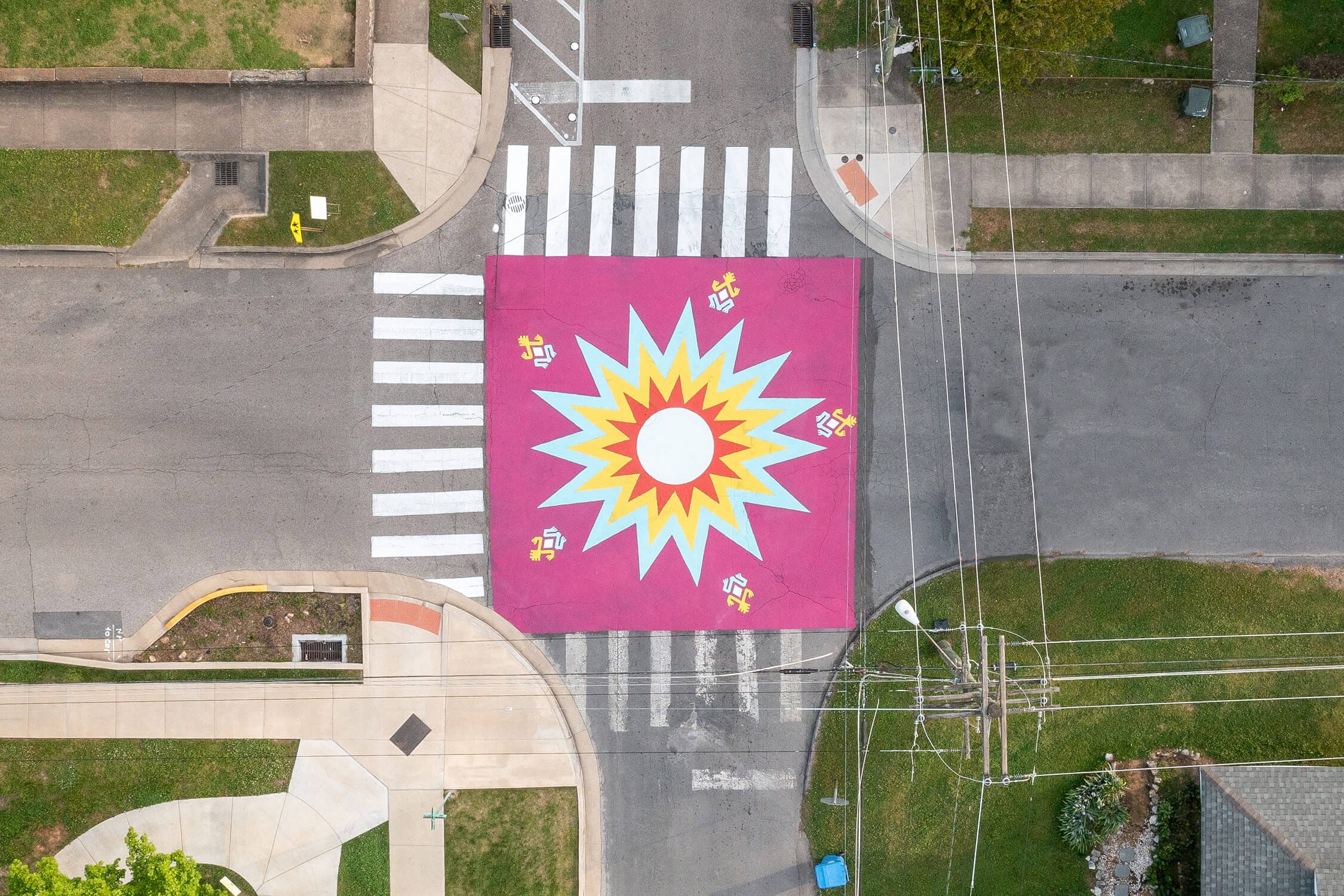
An aerial view of a Chattanooga street mural inspired by Guatemalan textiles, a design choice that reflects the local community. Photo: TPL staff
Peterson says she will never forget a conversation she had with a mother who happened by with her two young children one steamy evening, just as work was finishing on one of the murals. The young mother asked what the mural was all about. “I spoke to her in Spanish and asked if she recognized the frogs,” Peterson recalls.
The woman stared blankly for a moment. “I said, ‘They are from your textiles, from your culture,’” she remembers. “Her eyes lit up, and then they started to tear up. I teared up too. She looked at me and said, ‘Gracias,’ and I said, ‘This is for you. This is your park. This is your community.’”
Lisa W. Foderaro is a senior writer and researcher for Trust for Public Land. Previously, she was a reporter for the New York Times, where she covered parks and the environment.
One-third of Americans, including 28 million children, lack safe, easy access to a park within a 10-minute walk of home. Urge your senators to allocate funding to create parks and enhance outdoor recreational opportunities by championing the Outdoors for All Act today!
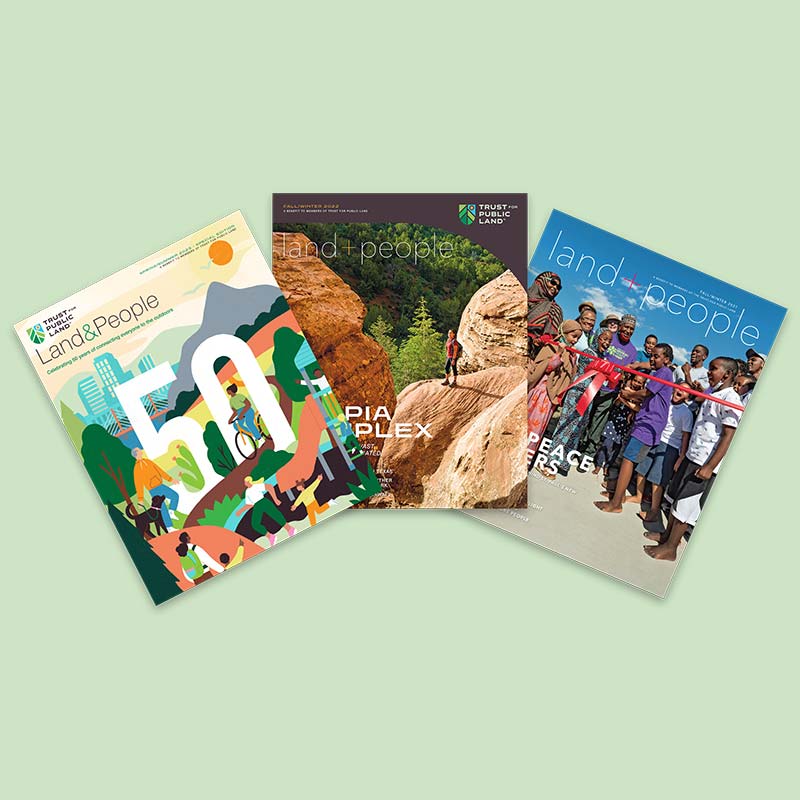
Donate to become a member, and you’ll receive a subscription to Land&People magazine, our biannual publication featuring exclusive, inspiring stories about our work connecting everyone to the outdoors.

